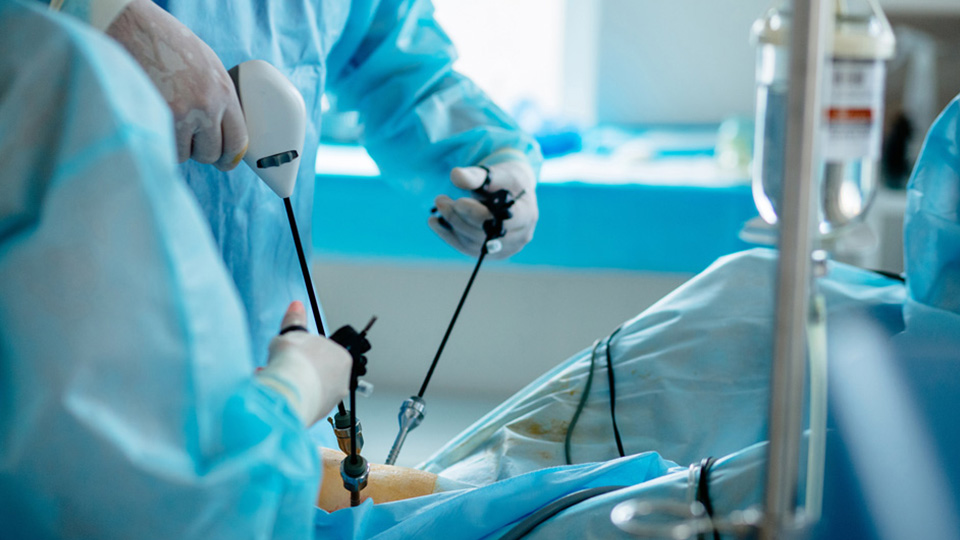Advanced laparoscopy, also known as minimally invasive surgery, has revolutionized surgical procedures by providing a less invasive alternative to traditional open surgery. This technique involves making small incisions through which a laparoscope (a thin, flexible tube with a camera) and specialized surgical instruments are inserted. The laparoscope transmits real-time images to a monitor, allowing surgeons to perform complex procedures with enhanced precision. Advanced laparoscopy offers numerous benefits, including reduced postoperative pain, shorter hospital stays, and faster recovery times. It is commonly used in various fields such as gynecology, urology, and gastroenterology.

Over the years, advancements in technology, such as high-definition imaging and robotic-assisted systems, have further refined laparoscopic techniques, making them applicable to a broader range of surgical procedures. This minimally invasive approach not only improves patient outcomes but also reduces the risk of complications and enhances overall surgical efficiency.
How Advanced Laparoscopy Works
Advanced laparoscopy works by utilizing small incisions, specialized instruments, and advanced imaging technology to perform surgical procedures with minimal trauma to the body.
Small Incisions:
Surgeons make small incisions, usually around 0.5 to 1.5 cm, to insert the laparoscope and surgical instruments. These small incisions reduce the risk of infection and speed up the healing process.
Laparoscope:
A laparoscope, equipped with a high-definition camera, is inserted through one of the incisions. The camera transmits real-time images to a monitor, providing the surgeon with a clear and magnified view of the surgical area.
Specialized Instruments:
Through additional small incisions, specialized surgical instruments are introduced to perform the procedure. These instruments are designed to fit through the small incisions and are controlled by the surgeon with precision.
CO2 Insufflation:
The abdominal cavity is often inflated with carbon dioxide gas to create a working space and improve visibility. This allows the surgeon to move instruments freely and see the organs more clearly.
Real-Time Monitoring:
The entire procedure is monitored on a high-definition screen, allowing the surgeon to navigate and operate with enhanced accuracy and control.
Application of Advanced Laparoscopy
Advanced laparoscopy is utilized in a wide range of surgical procedures, offering numerous applications across various medical fields.
Gynecology:
Used for procedures such as hysterectomy, myomectomy, and endometriosis treatment. Laparoscopy allows for precise removal of fibroids, cysts, and other abnormalities with minimal impact on surrounding tissues.
Urology:
Employed for kidney surgeries, prostatectomies, and bladder surgeries. It provides a less invasive option for removing tumors, repairing organs, and addressing urinary tract issues.
Gastroenterology:
Applied in surgeries involving the digestive system, such as gallbladder removal, appendectomy, and bariatric surgery. Laparoscopy ensures quicker recovery and reduced complications.
Oncology:
Utilized in cancer surgeries to remove tumors with minimal disruption to surrounding tissues. This approach helps in precise tumor excision and staging.
Colorectal Surgery:
Effective for procedures like colectomy, rectal surgery, and treatment of diverticulitis. It offers a minimally invasive alternative to traditional open surgery, reducing recovery time and postoperative pain.
Benefits of Advanced Laparoscopy
Advanced laparoscopy offers numerous benefits that significantly improve patient outcomes and surgical efficiency.
Reduced Postoperative Pain:
Smaller incisions result in less trauma to tissues, leading to reduced postoperative pain and discomfort for patients.
Shorter Hospital Stays:
Patients undergoing laparoscopic surgery typically experience shorter hospital stays compared to those who undergo traditional open surgery, promoting faster return to daily activities.
Faster Recovery:
The minimally invasive nature of laparoscopy allows for quicker recovery times, enabling patients to resume normal activities and work sooner.
Lower Risk of Infection:
Smaller incisions reduce the risk of infection and other complications, enhancing overall patient safety and recovery.
Enhanced Precision:
High-definition imaging and advanced instruments provide surgeons with enhanced precision, resulting in more accurate procedures and better surgical outcomes.
Risks and Limitations
Despite its many advantages, laparoscopy is not without risks and limitations. These include:
Complications from Anesthesia:
As with any surgery, there is a risk of complications related to anesthesia, including allergic reactions and respiratory issues.
Injury to Organs:
Despite the precision of laparoscopic instruments, there is a potential risk of accidental injury to surrounding organs and tissues during the procedure.
Bleeding:
Although less common than in open surgery, bleeding can still occur during or after laparoscopic procedures, requiring prompt management.
Infection:
While the risk is lower, infections at the incision sites or within the abdominal cavity can still occur and require treatment.
Limited Accessibility:
Some complex or advanced cases may not be suitable for laparoscopic surgery and may require traditional open surgery for effective treatment.
Preparation and Recovery
Proper preparation and recovery are crucial for the success of advanced laparoscopic procedures and ensuring optimal patient outcomes.
Preoperative Assessment:
A thorough preoperative assessment, including medical history, physical examination, and necessary diagnostic tests, is essential to determine the patient's suitability for laparoscopic surgery.
Fasting and Medication:
Patients are usually instructed to fast for a specific period before surgery and may need to adjust or discontinue certain medications as advised by their healthcare provider.
Anesthesia Consultation:
A consultation with the anesthesiologist is important to discuss anesthesia options, potential risks, and postoperative pain management.
Postoperative Care:
After surgery, patients are monitored closely for any immediate complications and provided with pain management, wound care, and instructions for gradual resumption of activities.
